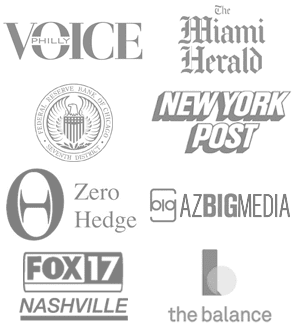Unlike a traditional second mortgage, a HELOC offers a revolving line of credit, allowing borrowers to draw funds as needed up to a set limit and pay interest only on the amount used. A home equity line of credit with a “prime minus 1” interest rate is particularly attractive due to its potential for lower borrowing costs. The RefiGuide published this article to explain what a home equity line of credit prime minus 1 means and listed a few of the top lenders offering prime HELOC rates in 2025. We listed a few of the top lenders offering prime home equity line of credit rates. this rate in 2025, presents three case studies, and provides references for further exploration.
What is Prime Minus 1 on a Home Equity Line of Credit or HELOC?

The prime rate is the interest rate banks charge their most creditworthy customers, typically set 3% above the federal funds rate.
As of June 9, 2025, the prime rate is 7.50% (WSJ Prime Rate).
A HELOC with a “prime minus 1” rate has a variable interest rate set at 1% below the prime rate, so at 6.50% APR currently.
This HELOC interest rate adjusts with changes in the prime rate, offering savings when rates are low but increasing costs if rates rise.
Home equity lenders often set floor and ceiling rates (e.g., minimum 3.25%, maximum 18%) to limit rate fluctuations.
Benefits:
-
Lower HELOC Rates: Prime minus 1 offers a lower rate than typical HELOCs (national average 8.27% in June 2025), reducing borrowing costs (Bankrate HELOC Rates).
-
Flexibility: Borrow only what is needed, paying interest solely on the drawn amount.
-
Tax Deductions: Interest may be deductible for home-related expenses.
-
Versatility: Funds can be used for various needs, unlike restricted 2nd mortgage loans.
Risks:
-
HELOC Rate Increases: Variable rates can rise, increasing payments.
-
Foreclosure Risk: Defaulting could lead to losing the home.
-
Fees: Potential closing costs, annual fees, or early termination fees.
-
Eligibility: Prime minus 1 rates require high credit scores (typically 740+) and low debt-to-income ratios (36% or less).
Top 4 HELOC Lenders Offering Prime Minus 1 in 2025
Securing a HELOC at prime minus 1 is rare due to its competitiveness, typically offered by credit unions and select banks to borrowers with excellent credit (FICO 740+) and significant equity (15–20% minimum). Below are four confirmed home equity lenders offering this rate, with a note that additional local credit unions and community banks may provide similar rates. Due to limited availability, only four are listed, but borrowers are encouraged to explore local HELOC lending promotions.
|
Lender |
APR |
Closing Costs |
Details |
|---|---|---|---|
|
Energy Credit Union |
6.50% (Prime – 1%, floor 2.25%) |
Not specified, likely minimal |
15-year draw, 5-year repayment, max 80% LTV (Energy Credit Union). |
|
Central One Federal Credit Union |
6.50% (Prime – 1%, floor 3.25%) |
None for Worcester County loans ≤ $250,000 (except appraisal/title fees) |
Annual rate adjustment, max 80% LTV, $7,500 minimum (Central One FCU). |
|
Landmark Credit Union |
6.50% (Prime – 1%, floor 3.0%) |
No annual fees, closing costs not specified |
10-year draw, no annual fees (Landmark CU). |
|
John Marshall Bank |
6.50% (Prime – 1%, floor 3.99%) |
Not specified |
10-year draw, 15-year repayment, auto-debit required (John Marshall Bank). |
Note: Other local credit unions and community banks may offer prime minus 1 rates, especially for high-credit borrowers. An X post from June 2025 suggests smaller credit unions frequently provide such rates (CreditUnionGuy Post). Contact prime rate HELOC lenders directly to confirm availability, as terms vary by creditworthiness and location.
Case Study 1: Kitchen Renovation
Borrower: Jane Doe, a homeowner with a 780 FICO score and 30% home equity.
Scenario: Jane needed $50,000 to renovate her outdated kitchen. She secured a HELOC from Energy Credit Union at prime minus 1 (6.50% APR in June 2025).
Outcome: The renovation increased her home’s value by $75,000, per a local appraisal. The low rate kept monthly interest payments affordable (approximately $270 for $50,000), and the flexible draw period allowed her to manage costs effectively. Jane plans to repay the balance quickly to minimize interest.
Case Study 2: Debt Consolidation
Borrower: John Smith, with a 760 FICO score and $100,000 in equity.
Scenario: John had $30,000 in credit card debt at 18% interest. He obtained a HELOC from Central One Federal Credit Union at prime minus 1 (6.50% APR).
Outcome: Consolidating the debt reduced his monthly interest from $450 to $162.50, saving over $3,500 annually. The no-closing-cost HELOC loan option for his $200,000 home in Worcester County minimized upfront expenses, allowing John to pay down the principal faster.
Case Study 3: College Tuition
Borrower: Emily Johnson, a parent with a 750 FICO score and 25% equity.
Scenario: Emily needed $40,000 for her child’s college tuition. She chose a HELOC from Landmark Credit Union at prime minus 1 (6.50% APR).
Outcome: The HELOC’s flexibility enabled her to draw funds each semester, paying an interest only payment on the used amount (e.g., $108.33 monthly for $20,000 drawn). The low rate and no annual fees made it more affordable than private student loans, and Emily could repay early without pre-payment penalties.
Advice for Borrowers Seeking Prime Rate HELOCs
To secure a prime minus 1 HELOC loan:
-
Check Credit and Equity: Ensure a FICO score of 740+ and at least 15–20% equity.
-
Compare HELOC Lenders: Obtain quotes from at least three lenders, focusing on interest rates, fees, and terms (Bankrate HELOC Tips).
-
Understand Terms: Verify floor/ceiling rates and adjustment frequency (e.g., monthly or annually).
-
Assess Risks: Plan for potential rate increases and ensure repayment affordability to avoid foreclosure. (consider converting a variable rate into a fixed rate HELOC when the interest rates decline.)
-
Consult Advisors: Discuss with financial and tax advisors to align the HELOC with your goals.
A HELOC at prime minus 1 offers significant savings for homeowners seeking to leverage their home equity, with a current rate of 6.50% APR based on the 7.50% prime rate in June 2025. While only a few of the top HELOC lenders, such as Energy Credit Union and Central One Federal Credit Union, explicitly offer this HELOC interest rate, local credit unions and community banks may provide similar deals for qualified borrowers. The case studies demonstrate the versatility of these HELOCs for home remodeling, consolidating debt, and education expenses. However, the variable interest rate and foreclosure risk require careful financial planning. Comparing multiple home equity line of credit lenders, banks and credit unions and understanding terms are crucial to maximizing benefits.
Key Citations
- WSJ Prime Rate Forecast
-
Bankrate Best HELOC Rates June 2025
-
CreditUnionGuy X Post on HELOC Rates
-
Energy Credit Union Home Equity Line of Credit
-
IRS Home Equity Loan Interest Deduction
